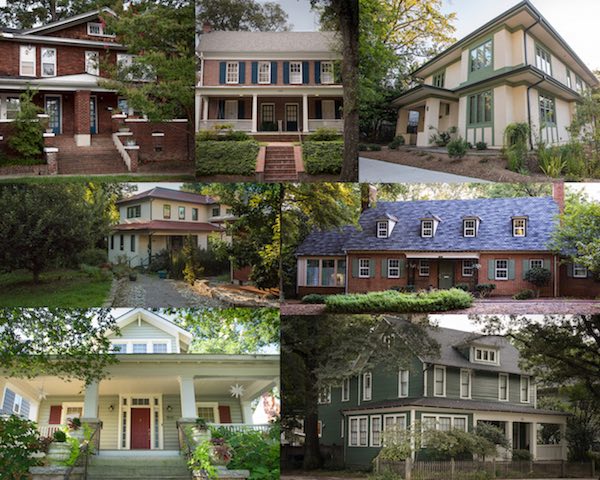The Trinity Park Neighborhood Association (TPNA) was founded in 1974, with one of its primary purposes being “to preserve and enhance the physical character of the neighborhood by encouraging maintenance, revitalization, and beautification of buildings and grounds (including shade trees), and by encouraging the renovation of existing buildings rather than their demolition and replacement.” (https://trinitypark.org/bylaws/)

Last winter and spring, before Covid hit, the TPNA board had been exploring the question of whether Trinity Park should seek designation as a local historic district, to help preserve the historic structures that give the neighborhood its unique character. It’s a question that has arisen many times over the past several decades.
The TPNA board meeting of March 2020 was devoted to the subject. A large number of Trinity Park neighbors came to learn and ask questions. Three invited guests–April Johnson and Tom Miller from Preservation Durham, along with Sarah Lachenman from Four Over One Design–shared about different types of historic district designations available in Durham and how they might affect the neighborhood:
- The National Register of Historic Districts can provide certain tax credits for maintenance, but offers little in the way of protective regulation, and nothing against demolition. A large part of Trinity Park is on the National Register. (See the references at https://en.wikipedia.org/wiki/Trinity_Historic_District)
- Local historic district designation, on the other hand, provides some protective regulation to limit changes to historic structures, including up to a 1-year delay of demolition. The Historic Preservation Commission in Durham considers major proposed changes to properties in the district and can deny those that would harm the character of the neighborhood. Trinity Park has no such protections, as it is not currently a local historic district. Eight Durham neighborhoods are local historic districts: Trinity Heights, Watts-Hillandale, Morehead Hill, Holloway St., Golden Belt, Fayetteville St., Downtown Durham, and Cleveland St. (See https://durhamnc.gov/398/Local-Historic-Districts) The boundaries of each local historic district are defined by neighborhood organizers and do not need to include all of the neighborhood.
- A Neighborhood Protective Overlay (NPO), while not discussed in depth at the meeting, is another option. It is a customized set of protections designed to help preserve the established character of the neighborhood. Trinity Park does not have an NPO. Two Durham neighborhoods do: Old West Durham and Tuscaloosa Lakewood.
The March 2020 meeting was meant to start a conversation (or, more precisely, re-start a conversation). Some neighbors expressed a desire to preserve the historic character of the neighborhood. Some worried that local historic designation would restrict the freedom of homeowners, landlords and developers. Some are concerned that, with 10 of the other downtown neighborhoods having development restrictions, Trinity park will increasingly be a target for teardowns if left unprotected.
The TPNA board agreed that the board itself would not be the body to pursue the formation of a local historic district, but that they could facilitate bringing in parties to discuss the benefits and drawbacks.
If you’re interested in being part of the conversation, contact TPNA President Karalyn Colopy at karalyncolopy@gmail.com
